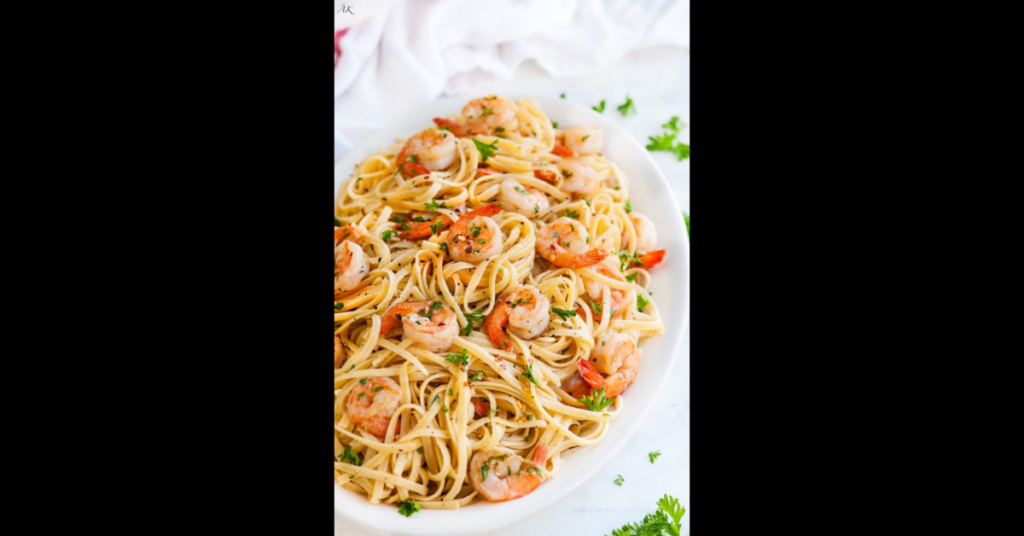Pasta, an iconic element of Italian cuisine, has a special place in the hearts of food lovers worldwide. Among the diverse shapes and varieties, linguini stands out with its elegant, flat, and narrow appearance. This versatile pasta, often overshadowed by its more famous cousin spaghetti, deserves the spotlight for its unique texture and adaptability in various dishes. This article delves into the origins, traditional recipes, modern interpretations, nutritional benefits, and the cultural significance of linguini, offering a comprehensive exploration of this beloved pasta.
Origins and History of Linguini
· Ancient Roots
The history of pasta is rich and complex, tracing back to ancient civilizations. While the exact origins of pasta are debated, it is widely accepted that the early forms of pasta were made in various cultures around the world, including China and the Middle East. However, it is in Italy where pasta truly flourished and diversified.
· Linguini’s Emergence
Linguini, which translates to “little tongues” in Italian, is believed to have originated in the Liguria region of Italy. This region, known for its coastal cuisine, naturally incorporated seafood and fresh herbs into its pasta dishes, with linguini becoming a popular choice. The shape of linguini, slightly flattened compared to spaghetti, is ideal for capturing and holding onto sauces, making it a favorite for many traditional Italian recipes.
· Evolution Over Time
Over centuries, linguini has evolved, adapting to various culinary trends and regional ingredients. Its versatility has allowed it to be used in a wide array of dishes, from simple garlic and oil preparations to complex seafood stews. Today, linguini is enjoyed worldwide, symbolizing both the simplicity and the sophistication of Italian cuisine.
Traditional Linguini Recipes
Linguini alle Vongole
Ingredients:
- 400g linguini
- 1 kg fresh clams
- 4 cloves garlic, minced
- 1/2 cup white wine
- 1/4 cup olive oil
- Fresh parsley, chopped
- Salt and pepper to taste
- Red pepper flakes (optional)
Instructions:
- Prepare the Clams: Soak the clams in cold water with a bit of salt for 20 minutes to remove sand. Rinse thoroughly.
- Cook the Linguini: In a large pot, bring salted water to a boil and cook the linguini until al dente.
- Sauté the Garlic: In a large skillet, heat olive oil over medium heat. Add the garlic and sauté until fragrant.
- Add the Clams: Add the clams to the skillet, pour in the white wine, and cover. Cook until the clams open, about 5-7 minutes. Discard any clams that do not open.
- Combine and Serve: Add the cooked linguini to the skillet, toss to combine, and season with salt, pepper, and red pepper flakes. Garnish with fresh parsley and serve hot.
Linguini al Pesto Genovese
Ingredients:
- 400g linguini
- 2 cups fresh basil leaves
- 1/2 cup extra virgin olive oil
- 1/3 cup pine nuts
- 2 garlic cloves
- 1/2 cup grated Parmesan cheese
- Salt to taste
Instructions:
- Prepare the Pesto: In a food processor, combine basil leaves, pine nuts, and garlic. Pulse until finely chopped. With the motor running, slowly add olive oil until smooth. Stir in Parmesan cheese and season with salt.
The Future of Linguini
1. Innovations in Pasta Production
The pasta industry continues to innovate, with advancements in pasta production techniques and ingredients. These innovations aim to improve the nutritional profile of pasta, enhance its texture, and reduce its environmental impact. For example, the use of alternative flours such as chickpea, lentil, and quinoa flour is becoming more common, offering new options for health-conscious consumers.
2. Sustainable Practices
Sustainability is a growing concern in the food industry, and pasta production is no exception. Companies are adopting sustainable practices, from sourcing ingredients responsibly to reducing waste in production. This commitment to sustainability ensures that the enjoyment of linguini can be passed down to future generations.
· Culinary Exploration
As chefs and home cooks continue to explore new culinary horizons, linguini will undoubtedly play a role in innovative and creative dishes. The versatility of linguini allows it to be adapted to various cuisines and cooking styles, ensuring its place as a beloved pasta for years to come.
Conclusion
Linguini, with its rich history, versatility, and cultural significance, is much more than just a type of pasta. It is a culinary canvas that reflects the creativity and passion of those who prepare and enjoy it. From traditional Italian recipes to modern interpretations, linguini’s continues to captivate food lovers around the world. As we look to the future, the timeless appeal of linguini’s will undoubtedly endure, inviting us to savor each bite and explore the endless possibilities it offers. Whether enjoyed in a simple garlic and oil preparation or a complex seafood dish, linguini remains a testament to the beauty and joy of Italian cuisine.







